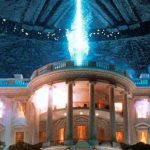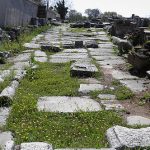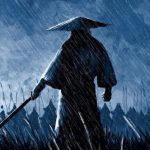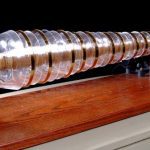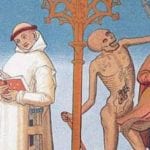 Creepy
Creepy  Creepy
Creepy  Technology
Technology 10 Scientific Breakthroughs of 2025 That’ll Change Everything
 Our World
Our World 10 Ways Icelandic Culture Makes Other Countries Look Boring
 Misconceptions
Misconceptions 10 Common Misconceptions About the Victorian Era
 Mysteries
Mysteries 10 Strange Unexplained Mysteries of 2025
 Miscellaneous
Miscellaneous 10 of History’s Most Bell-Ringing Finishing Moves
 History
History 10 Great Escapes That Ended Right Back in Captivity
 Weird Stuff
Weird Stuff 10 Fascinating Things You Might Not Know About Spiders
 Food
Food 10 Everyday Foods You Didn’t Know Were Invented by the U.S. Military
 History
History 10 Odd Things Colonial Americans Kept at Home
 Creepy
Creepy 10 More Representations of Death from Myth, Legend, and Folktale
 Technology
Technology 10 Scientific Breakthroughs of 2025 That’ll Change Everything
 Our World
Our World 10 Ways Icelandic Culture Makes Other Countries Look Boring
Who's Behind Listverse?

Jamie Frater
Head Editor
Jamie founded Listverse due to an insatiable desire to share fascinating, obscure, and bizarre facts. He has been a guest speaker on numerous national radio and television stations and is a five time published author.
More About Us Misconceptions
Misconceptions 10 Common Misconceptions About the Victorian Era
 Mysteries
Mysteries 10 Strange Unexplained Mysteries of 2025
 Miscellaneous
Miscellaneous 10 of History’s Most Bell-Ringing Finishing Moves
 History
History 10 Great Escapes That Ended Right Back in Captivity
 Weird Stuff
Weird Stuff 10 Fascinating Things You Might Not Know About Spiders
 Food
Food 10 Everyday Foods You Didn’t Know Were Invented by the U.S. Military
 History
History 10 Odd Things Colonial Americans Kept at Home
Ten Little-Known Facts about the Dust Bowl
In October 1929, the American stock market crashed. After riding high for much of the 1920s, Wall Street took a major dip, and the economy followed. But for a little while after, Americans farmers far out west didn’t quite feel the effects of the crash. Farms had been producing profitable products for years since World War I. Sadly, beginning in 1930, that all changed.
In a terrible piece of timing to go along with the stock market crash, a brutal drought began to sweep across the Southern Plains. That, combined with unsustainable farming practices, led to total crop losses in Kansas, Oklahoma, Colorado, and other Plains states. Soon enough, the eroded topsoils had been kicked up into incredible dust storms—miles high and dozens of miles wide—that swept across the country. The Dust Bowl was here, and the Great Depression was on.
But what do you really know about the Dust Bowl? Aside from those iconic (and unsettling) pictures of dust clouds sweeping across the Plains, how much do you know about the farming crisis that pushed the United States to the brink of disaster? In this list, we’ll go over ten little-known (or often-forgotten) facts about the Dust Bowl, what caused it, and why it persisted so severely for so long.
Related: 10 Things That Developed Because Of The Great Depression
10 We Caused It
It’s tempting to think of the Dust Bowl simply as a horrific drought that turned even worse as conditions soured. And while that negative feedback loop is partially correct—the region did see nearly unheard-of drought conditions at points during the early 1930s—it doesn’t tell the whole story. In addition to the drought, the habits of the American agricultural industry over the two decades before the Dust Bowl directly contributed to the area’s issues.
See, during and after World War I, there was a significant demand for American-grown wheat. The production of that crop had cratered in Europe and elsewhere around the world at the time. In swooped American farmers, who rode high on surging prices and good times. But soon, they over-farmed, over-plowed, and over-grazed the Southern Plains. Farmers and land developers pushed to plow, and plow, and plow, hoping to capitalize on what they were sure would be a never-ending demand for their product. And yet it ended simply because they refused to let the land lie fallow and recover.
As the drought set in during the very beginning of the Great Depression, it became clear that farmers hadn’t been careful with the region’s topsoils. Plus, the wild prairie grasses that had anchored large stretches of topsoil away from farmlands were gone, too—all bought up for more farms and more farm products.
That left the land even more susceptible to drought than it normally would have been. And when the dry and windy conditions rolled in, it whisked away what little topsoil there was left. From there, dust storms were a fact of life, and the once-productive farmland was turned into a veritable desert.[1]
9 There Were Literal Plagues
Imagine being a farmer or a small-town resident in the Midwest in the 1930s and seeing massive dust storms sweeping through for hours or days on end. And if that wasn’t bad enough on its own, imagine adding literal plagues to the list. How could you not think the whole situation was Biblical? The Dust Bowl morphed from a terrible drought to a world-changing event for millions of people—and the apocalyptic incidents it brought out were just as unsettling as the dust itself.
During and after the storms, large populations of both jackrabbits and grasshoppers rushed to the wind-swept prairies to eat whatever they could find. Any crops still plucky enough to be growing throughout the region were seized on by these aggressive (and extremely hungry) creatures. Grasshoppers landed on every surface and seemed to be everywhere. Grasshoppers were sweeping in by the thousands and eating everything they could find.
It was so bad, and for so long, that even Washington D.C. couldn’t ignore it. “What the sun left, the grasshoppers took,” President Franklin D. Roosevelt once infamously said during a fireside chat in the middle of the Great Depression. Eventually, the National Guard had to be called out to assist. They crushed grasshoppers by the thousands with tractors driven over infested fields. They also burned other fields to rid the region of the swarm. Locusts were everywhere, too, giving unlucky Americans a truly Biblical plague with which to contend.
And the jackrabbits were the worst—and best—of them all. By 1935, jackrabbit infestations had gotten so bad that Dust Bowl towns began holding “rabbit drives.” In these grisly events, townspeople built pens and corralled the wild jackrabbits inside by the dozens or hundreds. Then, with the rabbits in one contained area, they slaughtered them with clubs and baseball bats. It was brutal, but it also meant food for starving people—and at least a temporary end to an unwanted infestation.[2]
8 Its Name Was Coined by Accident
Have you ever tried to give yourself a nickname? That never works. You can’t force a nickname upon yourself or anyone else. It has to come by chance, perhaps caused by an event or incident that links a person forever to the moniker. Then, it has to stick through natural use. You can’t force these things! Such is true of names for droughts, too, as it turns out.
On April 15, 1935, the Associated Press printed a news item in newspapers nationwide from reporter Robert Geiger. The intrepid journalist had been on hand in the Southern Plains for some time at that point, reporting on the grave conditions and failing fields. But up until then, nobody could decide on a name or title to give to this increasingly awful dry spell. That was until Geiger came through with a bit of genius in that April 15 column. At one point in his piece, Geiger’s words went a little something like this: “Three little words achingly familiar on a Western farmer’s tongue rule life in the dust bowl of the continent—if it rains.”
While the “if it rains” words were certainly poignant, it was his throwaway description of “the dust bowl of the continent” that ended up sticking. Not long after, other media outlets picked up the clever two-word saying, and it spread like… well, a fast-moving dust storm.
As for Geiger, it appears he didn’t intend for “dust bowl” to become such common parlance. Just a couple days later, in another dispatch, he wrote of the drought-rocked region as the “dust belt.” But that one didn’t stick, and the first one did. And today, the whole world knows that time and place as the Dust Bowl.[3]
7 Rainmakers Ran Rampant
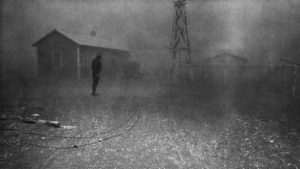
As so often happens during times of economic strife, scammers and charlatans swooped in to take advantage of Dust Bowl farmers in particularly tricky situations. And nowhere was the scamming and use of unconfirmed superstition more prevalent than in the battle for rain to end the drought. Some farmers did basic superstition stuff to try to make rain fall. For example, they would kill snakes and hang them on fences belly-up to supposedly appease the clouds to burst.
But when that didn’t work, other farmers tried to do more. The city of Dalhart, in the north Texas panhandle, was the hardest-hit Dust Bowl town of them all. Wheat and other crops had been long dead by the mid-1930s, and once-prosperous ranchers were left with nothing after their livestock had died en masse. So Dalhart’s farmers got together one day, scrounged up $500, and paid off a rainmaker who swore he could get the clouds to open up.
The rainmaker was a man named Tex Thornton, and he swore to the farmers of Dalhart in 1935 that he could make their problems go away. His method? Dynamite. Tex set off a barrage of rockets pointed upward into the sky. The rockets carried a highly explosive mixture of nitroglycerine and dynamite. He claimed (and maybe even thought himself) that the dynamite would burst open the clouds above and bring forth rain.
Of course, that didn’t happen, and the drought continued on for several more years. Tex got his money, though, and Dalhart farmers were back at the same place they started—and with $500 less.[4]
6 Dust Storms Were Electrical Storms
While dealing with blowing dust for hours or days on end would seem bad enough, the dust storms came with a host of other issues, too. There were significant health problems associated with the storms, some leading to lifelong breathing issues. And dangerous items—nails, boards, you name it—got caught up in them as the wind blew the soil across the Plains. But the most common and unsettling problem associated with all the blowing dust was the very real risk of electric shock!
There was so much static electricity built up within the decade’s dust storms that they literally cackled, crackled, and popped as they rolled through towns. White-hot electrical flames were regularly seen sparking up as the dust crossed barbed wire fences. And the storms held such significant static electricity that they caused shocks even long after they’d moved on. People in the Dust Bowl who hugged each other or shook hands hours after dust storms would routinely shock each other. In some instances, the powerful shocks knocked these poor people out cold—or worse.
Static electricity was such a big problem throughout the 1930s that locals had to get creative (and fast) to find a solution. One of the biggest issues was that the electricity in these dust storms would short out car engines, radios, and other tools.
To combat that, motorists across the Plains began driving around with chains dragging along from the backs of their cars. It was awful for their already-poor gas mileage during a time when every penny counted, but the chains grounded the cars. Then, when a dust storm passed through, the autos (and their drivers) were mostly saved from the shock of, well, a serious shock.[5]
5 The Health Problems Mounted
While electrical shock was a very real issue during the Dust Bowl days, the most common problems were far more deadly. As you might expect, the lung and breathing problems associated with dust storms were brutal and long-lasting. Air pollution, in general, isn’t good for people, so it shouldn’t be any surprise that thick, swirling dust often proved fatal. And those already on the lower end of immune system recovery—the sickly, the very old, and the very young—were uniquely at risk across the entire decade.
No matter how healthy Dust Bowl locals were, they all suffered from persistent coughing spasms and serious shortness of breath after inhaling the tainted air. Dust spores caused and exacerbated issues like asthma, bronchitis, fever, and flu. Doctors soon began noticing that many farmers and other small-town residents were suffering from silicosis. That’s an issue very common with miners and is caused by high silica content in the air. While these farmers weren’t spending any time underground, of course, the dust and soil kicked up, causing them to breathe in extremely small silt particles. In turn, it severely harmed their health.
But sadly, the most serious of all issues in the Dust Bowl was “dust pneumonia.” It was a dust-induced lung disease that preyed on society’s most vulnerable people. Thousands of the Plains’ youngest, oldest, and most sickly residents perished from dust pneumonia across the 1930s. Thousands more families fled the region specifically to avoid the harm it brought to their children and grandparents. For residents of the area rocked by the Dust Bowl, it seemed like there was nowhere to turn for respite.[6]
4 It Reached All the Way to the Atlantic
The Dust Bowl originated in the Plains states, as we’ve learned by now. Southeastern Colorado, southwestern Kansas, and parts of Oklahoma and Texas were the hardest hit at first. Then, the agricultural issues spread from there across the Midwest. But amazingly, that’s not the only place that saw the brutal effects of the Depression-inducing issue. In fact, one Dust Bowl storm even made its way all the way out to the Atlantic Ocean.
On May 11, 1934, a two-mile-high dust storm blew east—far, far east. It tracked its windy way all the way up to New York City and across other cities on the eastern seaboard. During the day on May 11, it shocked New York residents by covering iconic landmarks like the Statue of Liberty in a (literal) cloud of prairie dust. It also made itself felt in Washington, D.C., where the U.S. Capitol was shrouded by this awful agricultural problem.
For most New Yorkers and other east coast residents, the dust storm proved to be a very temporary inconvenience. They sucked it up (or tried not to!) and went about their day. The ones who could chose to stay inside and wait out the unsettling event. But the significance of the two-mile-high storm wasn’t lost on those who were paying attention.
Down in D.C., lawmakers had actually been debating a soil conservation bill right as the dust storm hit the capital city. That irony wasn’t lost on Americans, who knew something was seriously wrong with the nation’s agricultural output and the people suffering under its demise.[7]
3 Most Refused to Flee
If you’ve ever read John Steinbeck’s iconic novel The Grapes of Wrath, you know all about Okies who migrated west to Oklahoma while looking for work. And to hear Steinbeck himself tell it in that Pulitzer Prize-winning book, it would seem almost as if all the Oklahomans in the world took to California looking for a fresh start. But that’s not exactly true.
Now, it is true that California experienced a massive surge in population in the 1930s. Some estimates claim government officials counted well over a million people who moved into the Golden State during the worst years of the Great Depression alone. But that doesn’t tell the whole story on its own. In fact, the net in-migration coming to California was from all over the country. Agriculture in the Central Valley of California was still booming despite the drought elsewhere, and people from all states stringing back to the Deep South and East Coast were looking to get good jobs and settle there.
In addition, most families who were wracked by the worst of the Dust Bowl simply didn’t want to leave the land they called home. Some of them had ancestors who had been homesteaders on that land generations before. And many simply refused to flee their property—even if they couldn’t grow food on it to feed themselves. Most of the ones who did leave their land didn’t move far away, either. The majority of Dust Bowl migrants moved to neighboring states with the intention of returning once they could.[8]
2 Okies Were Surprisingly Few
Speaking of Steinbeck’s Okies, if you just leave your Great Depression knowledge to The Grapes of Wrath, you might think that every single Dust Bowl migrant to California hailed from Oklahoma. But that wasn’t true—and not by a long shot. In reality, the term “Okies” was simply used as a catch-all by native Californians to voice their displeasure at all migrating Americans seeking better living conditions and jobs. As far as the numbers are concerned, historians now estimate that only about one-fifth of the Dust Bowl migrants who made it to California were coming from Oklahoma. A significant portion of that group was from the eastern part of the state, which had been (relatively) unaffected by the worst parts of the Dust Bowl.
Along with the “Okies,” there were “Arkies” from Arkansas and “Tex” from—you guessed it—Texas. Plus, other Dust Bowl states like Kansas and Colorado saw plenty of migrants leave for California. And lots of other Midwestern farmers picked up and moved to the west for a new start, too. But for many reasons, “Okies” was what stuck in the national lexicon.
It didn’t help that it was used throughout the 1930s in California cities like Bakersfield and Los Angeles as a derogatory word meant to insult any poor newcomer into the state. Native Californians didn’t like the pressure these people put on jobs and wages in the state, and they lumped them all together in one big, unwanted group.[9]
1 Please Plow It Up
As the Dust Bowl persisted across nearly the entire decade of the 1930s, President Franklin Delano Roosevelt and his advisers knew something had to be done. Instead of just letting people suffer without assistance, Roosevelt took action. As part of the New Deal, FDR ordered the federal government to start purchasing starved livestock for $1 per head. Healthier livestock would then go for up to $16 per head. The meat was quickly cut up and used to feed hungry people living in Hoovervilles around the affected region and elsewhere.
By 1935, the government was getting into the farm business, too. In 1935, the Soil Conservation Service was established. It paid farmers to plow up whatever few crops they had left and leave their fields fallow. It was a Hail Mary bid to let topsoils settle and hope that crops could one day be regrown, but slowly, it worked. It also taught land management techniques to farmers.
The SCS pushed crop rotation and expounded upon the importance of planting native prairie grasses and windbreaker trees. By the end of it all, the feds ended up buying more than 10 million acres of dried-up farmland and re-converted it back to native grasslands. Some of that land is even still managed today by the U.S. Forest Service.[10]

